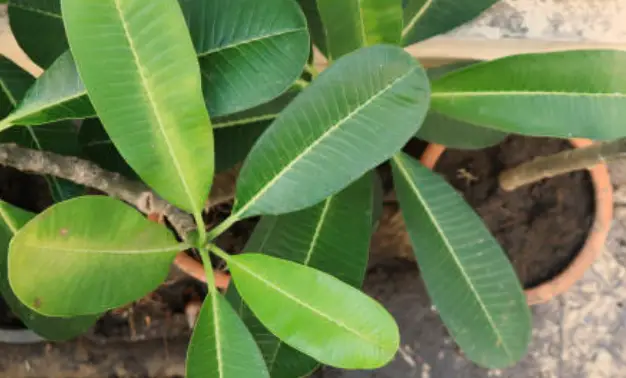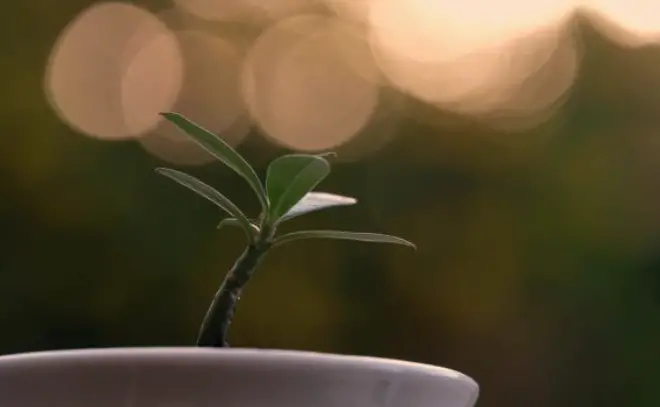The tropical flowering plant plumeria, sometimes called frangipani, yields exquisite blossoms in a variety of hues, including pink, yellow, white, and multicolored variations. The flowers have an intoxicating, sweet fragrance that can perfume an entire yard or patio area. While plumeria grow beautifully in warm, humid climates like Hawaii, Florida, and Southern California, they can also be grown successfully in colder environments when planted in containers that can be brought inside during the winter months.
If you’ve always dreamed of having a plumeria tree but don’t live in a tropical paradise, don’t despair! With the right care and preparation, you can absolutely grow a spectacular plumeria in a pot or planter box right on your patio, deck, or even indoors. Let’s go over all the keys for plumeria container gardening success.
Choosing the Right Plumeria for Containers
There are dozens of different plumeria species and cultivars to choose from, with flowers in a rainbow of shades, from bright yellows and oranges to pinks, reds, and crisp whites. They also come in different sizes, shapes, and growth habits. When selecting a plumeria for growing in a container, you’ll want to look for dwarf or semi-dwarf varieties.

Some popular compact plumeria cultivars that are great for pots include:
• Singapore White & Singapore Pink: low-growing with a max height around 4 feet
• Dwarf Watermelon: Stays under 3 feet with lovely pink and yellow bicolor blooms
• Scott Prillaman: A compact 3–4 foot tree with wonderfully fragrant yellow flowers
• Penang Peach: 3–4 feet with peach, pink, and yellow multicolored inflorescences
• Serena Pixie: Only reaching 2-3 feet, one of the smallest plumerias available
• There are many named varieties with ‘Dwarf’ or ‘Compact’ in the name like Dwarf Flamenco, Dwarf Tutli Tutti, Dwarf Pink Seshin, etc.
Dwarf and semi-dwarf plumeria stay quite small and tend to have a bushier growth habit versus the very tall, single-trunk plumeria trees you often see in tropical areas. The more diminutive stature makes them ideal for container growing since the plant stays a manageable size.
Pot and Potting Mix Requirements
Plumeria need excellent drainage to prevent rot, fungal issues, and root problems, so having the right type of pot and soil mix is crucial. Terra cotta and ceramic pots are perfect for evaporation of excess moisture. You’ll also want to choose a pot with ample drainage holes in the bottom.

Growing Plumeria in Pots
As for size, a good rule of thumb is to start plumeria in a 6-inch pot, then go up one pot size each year until the plant is around 3 feet tall. At that point, you’ll want to use a large 20–30 gallon container which should accommodate the plumeria’s root system for many years.
Plumeria is like a very porous, well-draining potting mix. Regular potting soil often stays too wet. An ideal plumeria soil mix is 1 part potting mix, 1 part coarse perlite or small pebbles or crushed granite, and 1 part coarse bark chips or pieces of fir, pine, or fir bark. This chunky, airy mix allows excess moisture to drain away rapidly while still providing enough moisture retention and nutrients.
Sunlight, Water and Fertilizer are needed.
Coming from the tropics, plumeria needs at least 6–8 hours of direct sunlight each day. In hot climates, some afternoon shade can help prevent leaf scorching. Place your potted plumeria in the sunniest spot possible, ideally a southern or western exposure.
Plumeria have interestingly succulent-like properties that allow them to store water in their stems and branches and go dormant during drought conditions. However, lack of water will lead to leaf and flower drops.
In general, plan to thoroughly water your plumeria any time the top 2–3 inches of soil becomes dry. The soil should be allowed to dry slightly between waterings, but not for too long. Proper watering habits will become more apparent as you learn the rhythms of your specific plant. Yellow or dropping leaves are often a sign of overwatering.
During the active spring and summer growing period, feed your containerized plumeria every 2-3 weeks with a balanced liquid fertilizer or one made for blooming plants. You can also use a slow-release granular fertilizer worked into the soil.
Winter Dormancy and Protection
Unless you live in a very warm, frost-free climate, your potted plumeria will need protection during the winter months when they go semi-dormant. Plumeria are not cold-hardy and will suffer damage below 40°F. The leaves will start yellowing and dropping once nighttime temperatures drop into the 50s.

At that point, you have a few options:
1) Move Pots Indoors: This is the easiest solution if you have a warm, sunny spot indoors. An insulated garage or sunroom can work too. Just stop watering and let the plant go dormant until spring.
2) Store Dormant: If you don’t have indoor space, you can remove the plant from the pot, allow it to dry for 2 weeks, then store the unpotted plumeria bundled in a warm, dark, dry spot like a basement or closet until spring.
3) Keeping Potted Plants Outdoors: If winters are mild, you can try insulating the roots by wrapping the pot thickly in towels, burlap, or other insulation and hoping for the best. Cover the entire plant if frost is expected.
Whichever route you take, start watering again in very early spring before buds emerge, then place back outdoors once nighttime temperatures are reliably in the 50s. With proper overwintering, your plumeria should wake back up and bloom beautifully each year.
Other Plumeria Growing Tips
Use a Trellis or Support: Since many dwarf plumeria varieties have a bit of a floppy, bushy habit, it can help to provide a simple trellis, tomato cage, or other support structure for the plant to grow through as it matures. This prevents branches from splaying outward under their own weight.
Control Pests: The biggest pest problems plumeria may encounter are spider mites, mealybugs, and scale. Use insecticidal soap, neem oil, or other organic insect sprays to control outbreaks. Good airflow and quarantining new plants can prevent infestations too.
Prune for Shape: Feel free to prune plumeria to shape them into an attractive tree-like form. They can handle hard pruning and will quickly regrow branches. Remove any dead wood in early spring, when new growth starts. You can also root any pruned plumeria branches to start new plants!
Savor the Enchanting Fragrance: The strong, pleasant scent of plumeria flowers contributes to their enchanted nature. The aroma can range from being subtly lemony to overtly flowery.To enjoy the beautiful perfume of potted plumeria when they bloom, place them next to outdoor living areas or open windows.
You may enjoy plumeria in containers almost anyplace you want to, as long as you have some basic needs met, like plenty of sunlight, good drainage, and shelter from freezing temperatures.
The plumeria’s unique growth habits, heady floral bouquet, and exotic, long-lasting blooms will quickly make it one of your favorite patio or indoor plants. With the correct dwarf species and attention, plumeria are really gratifying and simple to maintain in pots, so do not be afraid. A potted plumeria tree will give your outdoor living spaces a hint of scent and island style!




